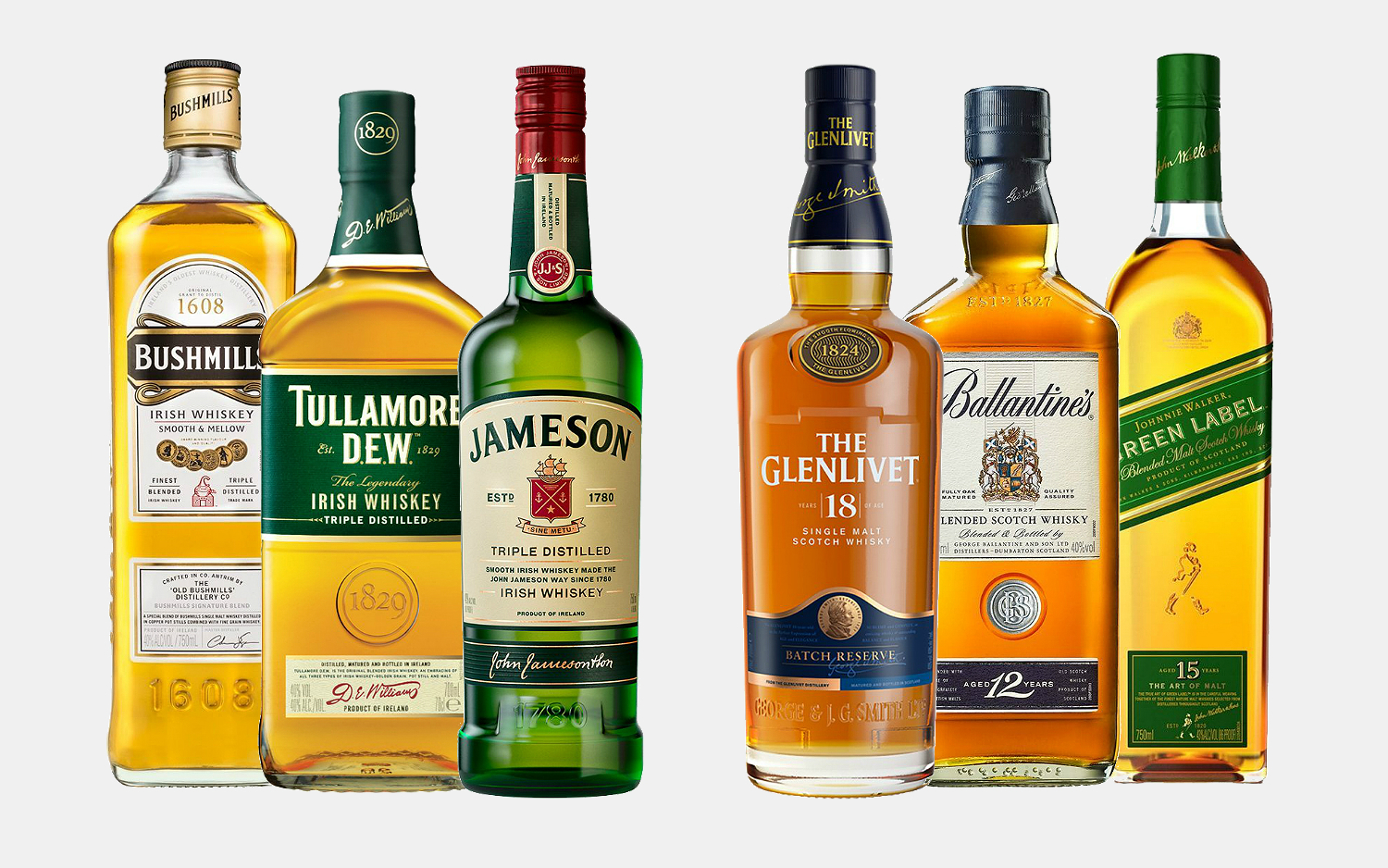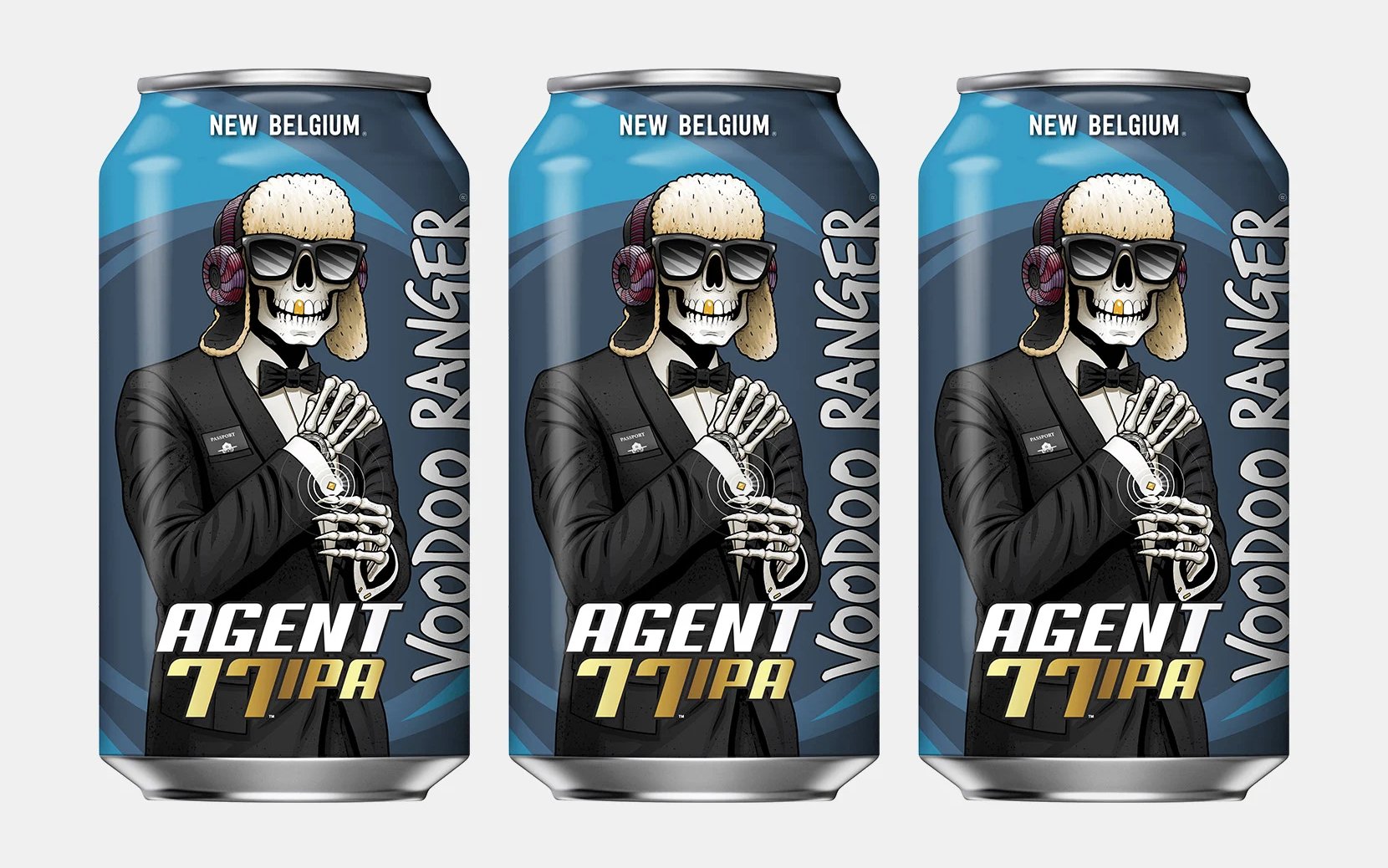What’s the difference? In this case the flippant answers are also the truth: One is made in Scotland, the other’s made in Ireland. The Irish like to use an ‘e’ when they spell whiskey. The Scots do not. Both are made from water, yeast, and grain and both are aged in wood. But that’s where the similarities end. And begin.
The fact is, Scotch and Irish Whiskey have a ton in common and many differences. If that sounds like an obvious statement, it starts to make sense when you wade into the deep, rich, and varied landscape of these two venerable spirits.
While both have specific laws dictating what can be labeled as whisk(e)y in their place of origin, within (and outside of) those laws, distillers have been inventing and refining, experimenting and altering their respective spirits for literally centuries. And each distiller putting out whiskey today, be it in Ireland, or Scotland is concerned with one noble goal: carefully making something truly unique — and truly delicious — for us to enjoy. At least in this respect, it’s a good time to be alive.
Which came first? Scottish or Irish Whiskey?
Most booze scholars agree that Irish monks in the Middle Ages were the first to distill the spirit that we now call whiskey. Though if you were to try a swig, you probably wouldn’t recognize it as the smooth amber nectar we know and love today. It was generally unaged, except for the small amount of time it might have spent in casks during storage or transport and it was often flavored with fruits and spices.
It didn’t take long before the monks brought their distilling know-how across the Irish Sea to share it with the Scots. Fast forward a few centuries to the late 1800s and you have the Emerald Isle producing and exporting more whiskey than any region in the world. Over in Scotland, distilleries like McCallan, Oban, Bowmore, Dalmore, and the Glens (-livet, -morangie, -kinchie, and -fiddich) were setting up their stills, but for the most part, back then Scotch stayed in Scotland.
The Irish largely stuck with pot distillation while the Scots turned to using continuous (column) stills. Bet you can guess which method is capable of making more booze. Combine Ireland’s slower production with a series of massive blows (trade restrictions after declaring independence from the UK, Prohibition in the US, and the general turmoil of WWII) and Irish whiskey nearly disappeared. By 1972 there were only two distilleries left in Ireland: Bushmills in the far north and Midleton (makers of Jameson) way down south.
But then, a wonderful thing. Fueled by the massive and steadily rising popularity of Jameson, Bushmills and a couple others, Irish whiskey-making has returned with force. In 2010 there were just four Irish whiskey distilleries. As of December 2019, there are over thirty, with more planned.
While the Irish whiskey landscape was struggling to survive, Scotland hummed along making Scotch. Respected and well-known two-hundred-year-old distilleries continue to turn out dependable, delicious, rare, and/or fine whisky and sixteen new Scotch distilleries have opened just in the last three years.
Scotland still sells about nine times more whisky than Ireland, with about 1.3 billion bottles sold in 2019 compared to about 1.5 million bottles sold for Irish whiskey.
How are Scotch and Irish Whiskey Made?
If you ever asked how any good alcohol is made, you know that answers from brewers and distillers will range from, “Very carefully” to, “None of your business.” Recipes, techniques, methods, and even rituals abound and differ from operation to operation. But there are laws that substances called Scotch or Irish whiskey must abide by.
Controlled by the Scotch Whisky Regulations 2009 handed down by the government of the UK, Scotch must first and foremost be fermented, distilled, aged, and bottled entirely in Scotland. It must be made from barley and water (other cereal grains can also be used) and they can only add yeast to get fermentation going. When it’s distilled, they can’t make it boozier than 98.4 percent ABV. And when they bottle it, a distiller may add only water and plain caramel coloring and bottle it at no lower than 40 percent ABV.
Compare that to Irish whiskey rules and you see a lot of similarities and two minor differences. According to the Irish Whiskey Act 1980, Irish whiskey must be distilled, fermented, and aged in the Republic of Ireland or Northern Ireland. Where Scottish law requires malted barley, Irish law simply says the whiskey must be fermented from a “mash of cereals.” Both must be fermented with yeast and both must be aged for at least three years. Where Scotch requires oak for aging, Irish whiskey simply calls for “wooden casks.” Irish whiskey has the same upper and lower ABV limits for distilling and bottling as Scotch does, as well as the same restrictions on what may be added to the whiskey: only water and plain caramel colouring.
Within those rules, there’s a lot of room for interpretation. Some Scotch (and some Irish whiskey) is peated, meaning peat (decomposed bog matter) was burned to dry out the malt after germination. Many Irish distilleries choose to triple distill their whiskey (enough that it’s considered a “traditional practice” in the technical file Ireland submitted to the EU to define Irish whiskey).
Though they legally can use new casks, the vast majority of whiskey from Ireland and Scotland is aged in barrels that were previously used to age something else. And most often that “something else” was good old American bourbon. Since our national spirit can only go into brand new charred oak barrels, there are a lot of used up barrels just looking for something to do. Sherry casks from Spain are also used, but there just aren’t as many (bourbon outsells sherry by a considerable margin and sherry producers are allowed to reuse those barrels as often as their hearts desire) About 90 percent of the barrels used to age Scotch once held American bourbon (and it’s probably close to the same for Irish whiskey).
Where you get into a few more actual rules is with the types of whiskey Ireland and Scotland produce.
What are the types of Scotch and Irish Whiskey?
Probably the most famous type of Scotch is single malt. The most popular is blended Scotch. There are three other official types of Scotch but you don’t run into them often outside of Scotland.
The high-end, top-shelf, rare, collection-worthy bottles that dreams are made of are mostly Single malt Scotch whisky (though there are plenty of single malts out there that are just good drinking buddies). “Single” means the Scotch came from one distillery. “Malt” means only malted barley went into the mash. To be called a single malt, the Scotch also must be distilled in a pot still.
Blended Scotch outsells all other Scotch by a big margin (as in 80 percent) and runs the gamut from very, very good, to good and cheap. It’s made by, not surprisingly, blending single malt with another legally defined Scotch whiskey called single grain Scotch which is, among other things, quicker to manufacture.
Head west to Ireland and there are four types of whiskey. The one that you’ll find only in Ireland is pot still Irish whiskey. Made from malted barley (like Scotch) and raw barley (like nothing else) and distilled in a pot still, this Irish spirit was once the most popular Irish whiskey. Like Scotland, Ireland is also quite proud of its single malt. Single malt Irish whiskey must be made with 100 percent malted barley and distilled in a pot still.
Should you drink Scotch or Irish whiskey?
Yes.
Knowing the history and laws and production methods is one thing. The important thing is how they taste and there are general characteristics. Often, blended Scotch is approachable and balanced with a clean light finish. Many triple-distilled Irish whiskies are smooth and warm with a touch of honey. Peated whiskies are often smoky, earthy, grassy, a touch medicinal. Single malt Scotch or a single malt Irish whiskey can be smoky and woody or spicy and full of vanilla. Some have fruity notes, some can be rich, some can be thin. You can even get an oily feel, or a coconut aroma.
There are about as many different notes and flavors as there are bottles made per annum on those European islands. The only way to know which is which and which you like best is to try them. With or without ice. Preferably with friends. Perhaps next to a fire, be it camp fire, pit fire, or before a great stone hearth at the back of an old tavern down a quiet village road on a grey and stormy afternoon.
Our Picks:
Disclosure: Clicking on these links and making a purchase may earn us a small referral fee, at no extra cost to you. Learn more here.


